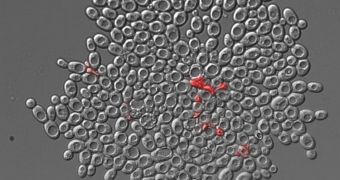A collaboration of experts from the University of Minnesota (UMN) says that it was recently able to shed more light on one of the most mysterious and important processes that allowed single-cells organisms to develop into multicellular clusters.
This took place more than 500 million years ago, but exactly how the transition occurred is something that experts have been trying to determine for a very long time. Understanding how this happened is very important, since those multicellular organisms eventually grew into all plants and animals.
Evolutionary biologists have been hard at work towards understanding this process for many years, and the UMN team was finally able to gain more insight into one of its key steps. The work was carried out on cultures of Brewer's yeast, a very common, single-celled organism.
As most modern lifeforms, the ancient precursors also used their numbers and new-found complexity in order to learn how to work together, cooperate, reproduce, and most of all adapt to whatever conditions their environment may throw at them
What the researchers discovered was that the primary reason for evolution is the emergence of division-of-labor, which the single-celled organism does in order to stand a better fighting chance of surviving.
The team details the exact mechanism through which this happens in this week's issue of the esteemed journal Proceedings of the National Academy of Sciences (PNAS). The work was sponsored by the US National Science Foundation (NSF) Division of Environmental Biology.
The paper was authored by UMN scientists Will Ratcliff and Michael Travisano, and colleagues Ford Denison and Mark Borrello. The team has already received extensive praises from evolutionary biologists in other research groups.
“The finding that the division-of-labor evolves so quickly and repeatedly in these 'snowflake' clusters is a big surprise,” says the acting deputy division director of the NSF DEB, George Gilchrist.
“The first step toward multi-cellular complexity seems to be less of an evolutionary hurdle than theory would suggest. This will stimulate a lot of important research questions,” the official goes on to say.
All the team needed in order to conduct the new investigation was a centrifuge, culture media and yeast cells. Overall, it took only 60 days to complete the experiment. “I don't think anyone had ever tried it before. There aren't many scientists doing experimental evolution, and they're trying to answer questions about evolution, not recreate it,” Ratcliff concludes.

 14 DAY TRIAL //
14 DAY TRIAL //